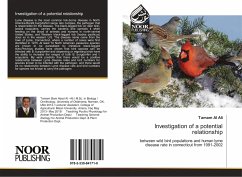Lyme disease is the most common tick-borne disease in North America.Borelli burgdorferi sensu lato complex, the pathogen that is responsible for the disease. The black-legged tick (or deer tick), Ixodes scapularis, carries the bacteria and spreads it when feeding on the blood of animals and humans in north-central United States, and Western black-legged tick (Ixodes pacificus) does so in the western U.S. The disease name came from the town of Lyme, Connecticut, where a number of cases were first identified in 1975. At least 70 North American passerine species are known to be parasitized by immature black-legged ticks.Previous studies have shown that bird species can be infected with B. burgdorferi and dispersing or migrating birds have the ability to increase the ranges of both B. burgdorferi and I. scapularis. My work predicts that there would be a positive relationship between Lyme disease rates and bird numbers for species known to be infected with the pathogen, and there would be no relationship between Lyme disease rate and bird numbers for species not known to carry the pathogen.
Bitte wählen Sie Ihr Anliegen aus.
Rechnungen
Retourenschein anfordern
Bestellstatus
Storno








